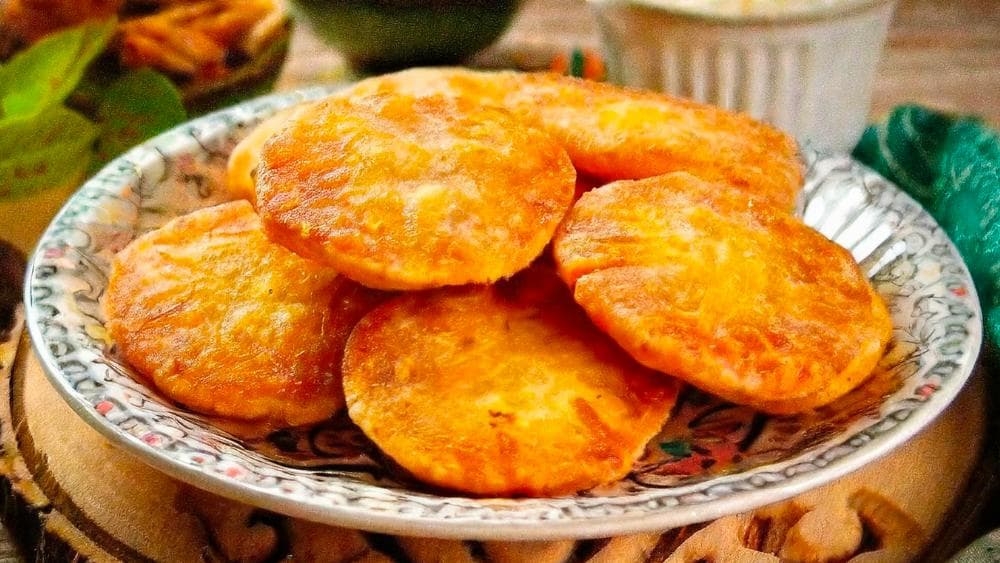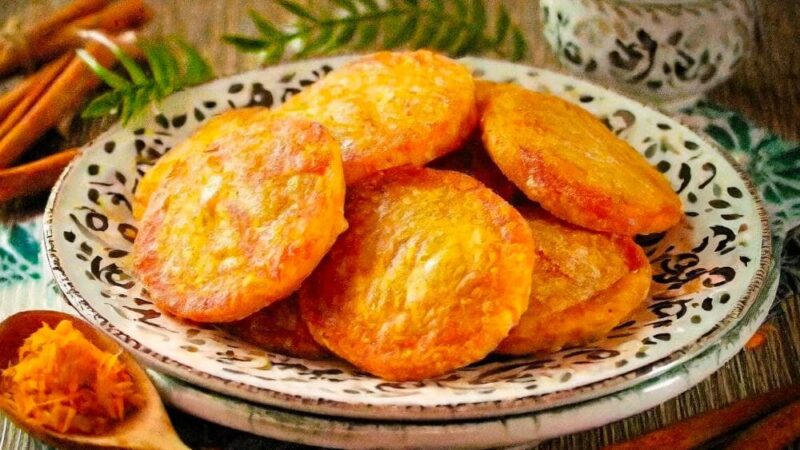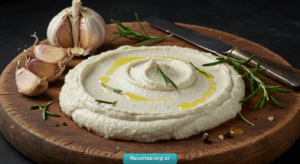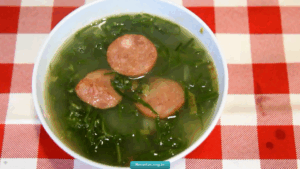
You may know them as fried cakes… But in most places they are known as sopaipillas. The dough is simple, making them is simple but like everything it will depend on the hand of the cook.
We tell you some variants, some of history and All you need to know to embark on this recipe. The most important? Be careful with the oil when frying, the rest is a piece of cake.
About sopaipillas and their versions
The sopaipillas They are a delicious and traditional dish of Chilean gastronomy., known for its unique flavor and versatility on the table. These exquisite preparations are highly appreciated on various occasions, from family celebrations to national festivities.
They are characterized by being small portions of fried dough, made with basic ingredients such as flour, water, salt and sometimes pumpkin.. The resulting dough is cut into circles or geometric shapes and fried until crispy on the outside and soft on the inside. They are often sprinkled with sugar.
It resembles broken calzones, but its dough does not contain lemon zest and is fluffier. They are very common in street stalls, generally in their simplest version, and the pumpkin was replaced by coloring.
Sweet soups with pumpkin
A popular variant is one that incorporates squash (pumpkin) in the dough. This additional ingredient not only contributes to consistency and color, but also provides a hint of natural sweetness.. Las sopaipillas with pumpkin They are a good option when pumpkins are in season and their flavor intensifies.
Healthier soups with butter
In some variants, the use of butter is dispensed with in preparation, looking for healthier options or adapting the recipe to dietary restrictions. Removing the butter not only alters the fat composition of the sopaipillas, but can also influence its texture and flavor. Despite this modification, Sopaipillas without butter continue to be appreciated by those looking for a lighter and healthier option.
The secrets to obtaining soft and perfect sopaipillas
Obtaining them with a perfectly smooth texture can depend firstly on several factors and techniques in the preparation and secondly on the proportion of ingredients in the dough.
Add the appropriate amount of liquids, water or pumpkin In some recipes, it is essential to achieve a balanced dough that results in tender sopaipillas. Furthermore, the Resting time of the dough before handling and frying can be decisive. Allowing the dough to rest properly helps relax the gluten, which contributes to a softer, lighter texture.
Another secret is the oil temperature during frying. Es crucial maintain a constant and moderate temperature to prevent the sopaipillas from cooking too quickly on the outside and being raw on the inside. A proper frying temperature allows the dough to cook evenly.
Where do sopaipillas come from?
They have an origin that dates back to pre-Columbian times in Latin America, specifically in the Andean and Mesoamerican region. Its history is intertwined with introduction of key ingredients such as pumpkin and flour by indigenous culturesand later, the arrival of the Spanish conquistadors.
The oldest version of sopaipillas could date back to the time of pre-Inca civilizations, where corn was a basic ingredient in the diet. With the arrival of the Spanish, new elements such as wheat flour were incorporated, and the recipe evolved with the introduction of European ingredients.
The adaptation of the dough based on flour and pumpkin was consolidated in Latin American cuisine, especially in Chile, where they became a culinary icon. In Argentina they are called fried cakes and they are also traditional during National Holidays.
Are picarones Peruvian sopaipillas?
In Peru, they are known by the name “picarones”, a delicious and popular dish that is an important part of the country’s rich gastronomic tradition. Although they share some similarities with Chilean sopaipillas, picarones have distinctive characteristics that make them unique in their style.
The picarones dough is made from macre squash, sweet potato and wheat flour, which gives it a soft texture and a peculiar flavor. One of the peculiarities of the Peruvian picarones is their shape that, unlike the sopaipillas, They come in the shape of rings, similar to donuts..
These rings are formed using special molds and then fried to a perfect golden brown. This preparation method gives the picarones a crispy on the outside and fluffy on the inside.
Follow me on Instagram (here)
And on YouTube I upload new videos every week (click here)
Sopaipillas recipe
Yield: 12 servings
Preparation time: 1 hour
Ingredients
- 2 cups of wheat flour
- 1/2 cup pumpkin or pumpkin puree
- 1 teaspoon salt
- Warm water (about 1/2 cup)
- Oil for frying
- Sugar for sprinkling (optional)
Short and easy process for the best sopaipillas
- In a bowl, mix the wheat flour, pumpkin puree and salt. Add warm water, mixing until you obtain a soft and homogeneous dough. The amount of water may vary, so add little by little.
- Knead the dough for a few minutes on a floured surface until it is workable. Cover the dough and let it rest for at least 30 minutes.
- After resting, stretch the dough until it is 1/2 centimeter thick. Cut with the chosen shape.
- Heat enough oil in a frying pan over medium heat. Fry the sopaipillas until golden on both sides.
- Remove from the oil and place on absorbent paper to remove excess oil. Sprinkle with sugar.

Source: www.paulinacocina.net


